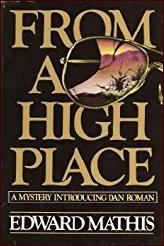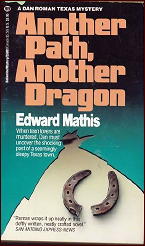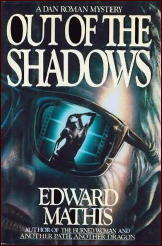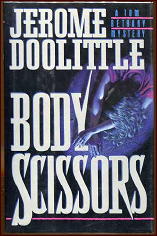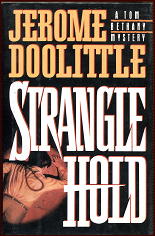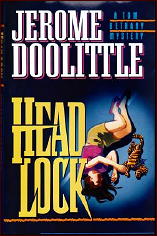Tue 31 Jan 2017
An Archived PI Mystery Review: KEN KUHLKEN – The Loud Adios.
Posted by Steve under Bibliographies, Lists & Checklists , Characters , Reviews[5] Comments
KEN KUHLKEN – The Loud Adios. St. Martin’s, hardcover, August 1991. Poisoned Pen Press, trade paperback, 2006.
This was the winner of the 1990 PWA/St.Martin’s “Best First Private Eye Contest,” and let me tell you right away that at the price they’re asking [$16.95], it’s a bargain.
Not many authors these days write hard, tough Black Mask fiction anymore — short, terse sentences that never pull a punch, and characters who never give an inch — and it’s always a pleasure to find one who does. This is it, guys, the real stuff.
PI Tom Hickey is doing double duty for the Army as an MP watching the border between San Diego and Tijuana. The year is 1943, the war is on, and refugees and politics are on everyone’s minds. Then Hickey takes on a job for a solider about to ship overseas — to rescue a girl doing nude shows in a rundown bar south of the border. The guy claims she is his sister; to Hickey she looks like an angel on earth.
What neither Hickey nor his client knows is that the stakes are much higher than this — there may or may not be a plot by Germans in Mexico to take over all of Baja California, there may or may not be a fortune in gold available for the taking.
Unfortunately, the girl, Wendy Rose, is either all or in part mentally retarded, or she has been so badly traumatized that she does not know reality from fantasy, either of which makes a tougher job even worse.
The title sounds like Chandler, on the back jacket is the inevitable quote from someone comparing Kuhlken to Chandler, and as usual, the Santa Ana winds are prominently mentioned, but to my mind, most of the book reminded me more of Dashiell Hammett, with a bit of Paul Cain thrown in. (Kuhlken, by the way, has written one other book, Midheaven, which according to the flap on the back of dust jacket, was nominated for a Hemingway Prize. He’s obviously got the right technique.)
Unfortunately, there is a down side to all of this. I wouldn’t call the plot line as straight as a string, but in many ways it’s like a one-note samba, one that simply goes on too long. Until Wendy Rose is finally rescued, Hickey and her brother simply make one sortie across the border after the other, each time getting a bit more daring, bringing along additional reinforcements with each trip, and continuing on until the job is done.
This takes over half the book. The remainder consists of gathering weaponry, forces and (most importantly) nerve, and then (but not till then) finally going back to finish the job — either making themselves rich, or saving America from a growing evil to the south. Or both, or neither — and that is something I simply shouldn’t tell you.
This is more than mere quibbles, but even without my seeing the rest of the entries in the contest, I think the judges made the right choice. Even though he hasn’t made much of bis life so far, Tom Hickey is no loser in my book.
The Tom Hickey series —
1. The Loud Adios (1991)
2. The Venus Deal (1993)
3. The Angel Gang (1994)
4. The Do-Re-Mi (2006)
5. The Vagabond Virgins (2008)
6. The Biggest Liar in Los Angeles (2010)
7. The Good Know Nothing (2014)
